Learn about the different types of coffee beans and how they can impact the flavor of your morning brew in this comprehensive guide. From bold and robust to fruity and floral, discover which coffee bean is right for you!
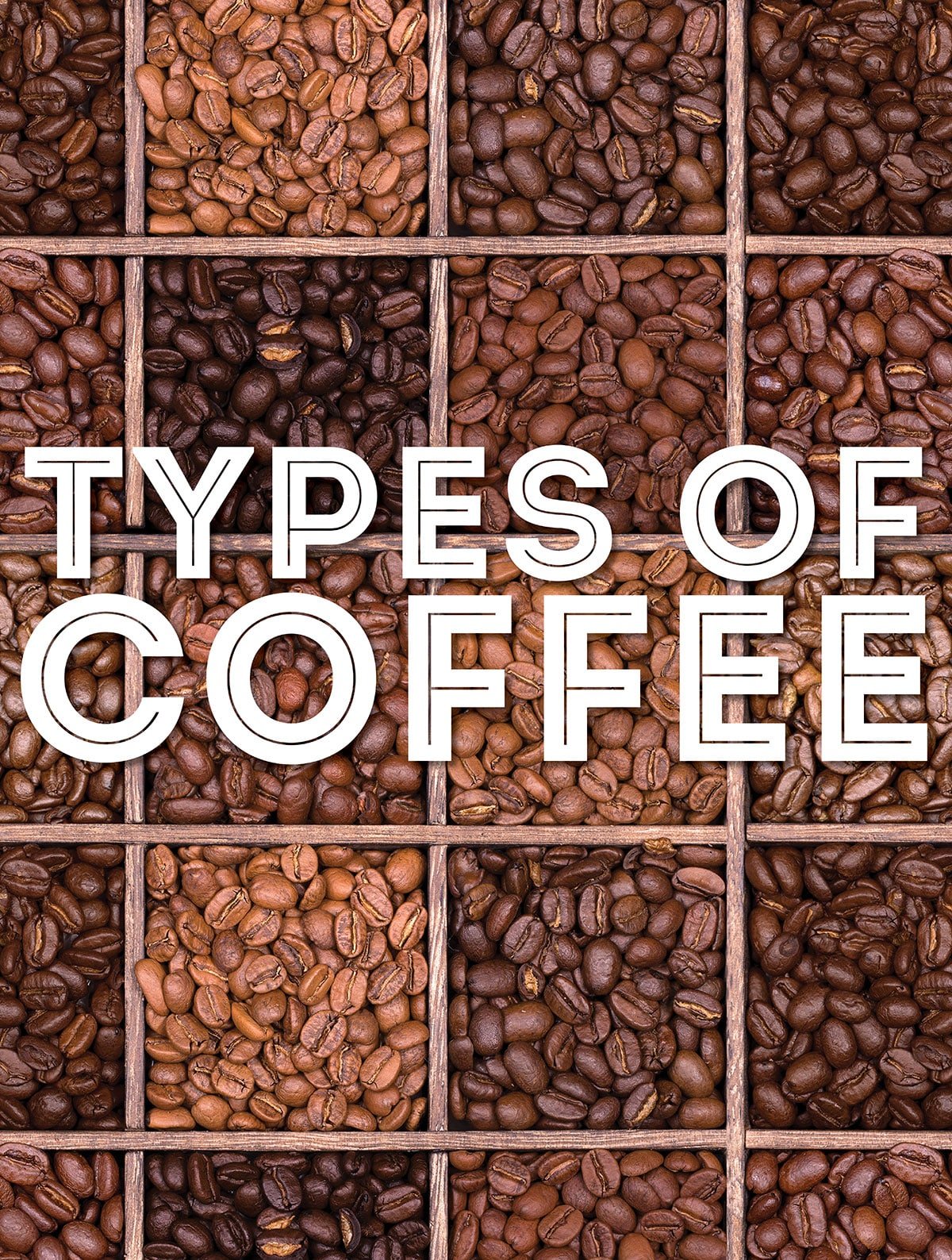
Coffee is one of the most beloved beverages in the world, enjoyed by millions of people every day, whether in a hot cup of joe, a refreshing cold brewed coffee. But not all coffee is created equal – the type of coffee bean used can have a significant impact on the taste and aroma of the final brew.
In this blog post, we will explore the different types of coffee beans, their characteristics, and how they contribute to the flavor profile of your cup of joe. Whether you’re a coffee aficionado or just starting to explore the world of specialty coffee, understanding the differences between coffee beans can help you choose the perfect brew for your taste preferences. So, grab a fresh cup of coffee and let’s dive into the fascinating world of coffee beans.
Growing coffee beans is a major undertaking and isn’t as easy as farming corn one year then rotating to soybeans the next. Coffee plants take up to five years to start bearing fruit and around ten years before their production can support commercial harvesting. They can then easily bear fruit for 30 years, so planters choose their plant types carefully.
Coffee Trivia!
Most people know that coffee has more caffeine than soda, but how much more? How much more caffeine does a 12 oz Starbucks Medium Roast coffee have than a can of Coke? (Scroll to the bottom of this post for the answer!)
a. roughly the same amount.
b. coffee has 2x as much caffeine.
c. coffee has 4x more caffeine.
d. coffee has 8x more caffeine.
What is a coffee bean?
Coffee beans are actually seeds from the coffee plant. They are not technically beans, but got that name as their shape resembles a bean. The coffee seed may also be called a pip, cherry, or stone. Most coffee fruits contain two beans though a single bean is present about 10% of the time. The beans are generally hand picked when ripe, and the fruit is stripped from the seed by either a dry or wet method before the beans are roasted.
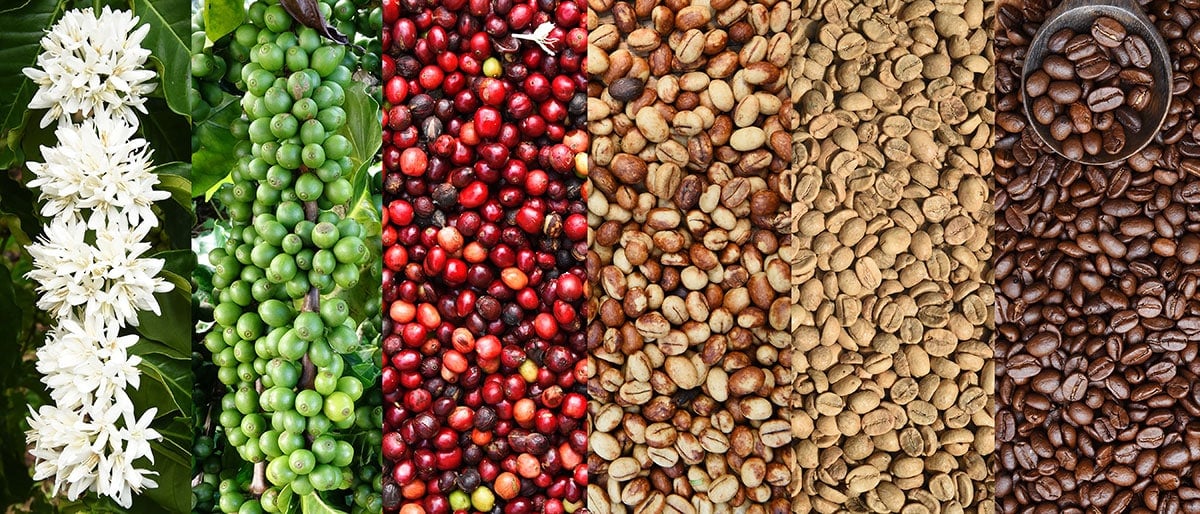
Where is coffee grown?
Coffee is grown across the globe in what is sometimes called the bean belt, but could simply be described as near the equator. This is why the coffee capitals of the world include Brazil, Columbia, Ethiopia, Indonesia, and Vietnam. Spread over three continents they all share similar equatorial climates perfect for coffee production.
Brazil is the world’s largest exporter of coffee beans, making up 45% of all bean exports. The USA is the world’s largest importer of coffee.
Which coffee has the most caffeine?
The world’s most popular coffee beans, Arabica beans, contain about 12 milligrams (mg) of caffeine per gram. Robusta beans have a higher caffeine content at 22 mg per gram.
Contrary to many people’s belief, the amount of caffeine in your coffee is not dependent on roasting style. A darker roast coffee has roughly the same amount of caffeine as lighter roasted, but of course has a stronger flavor.
The amount of caffeine you consume from a typical 8 ounces cup of coffee, does however, vary:
- Homemade drip coffee: 145 mg per cup
- French press coffee: 108 mg per cup
- Percolated coffee: 200 mg per cup
- Instant coffee: 60 mg per cup
- Decaffeinated coffee: 2-20mg per cup
Dunkin Donuts states that their iced coffee contains around 170 mg, brewed coffee 125 mg, Americano 160 mg, cold brew 150 mg per 8 ounces, and their espresso 118 mg per shot.
Starbucks states that their Pike Place roast has 155 mg, cold brew 100 mg, caramel macchiato 75 mg, and cappuccino 75 mg per 8 ounces.
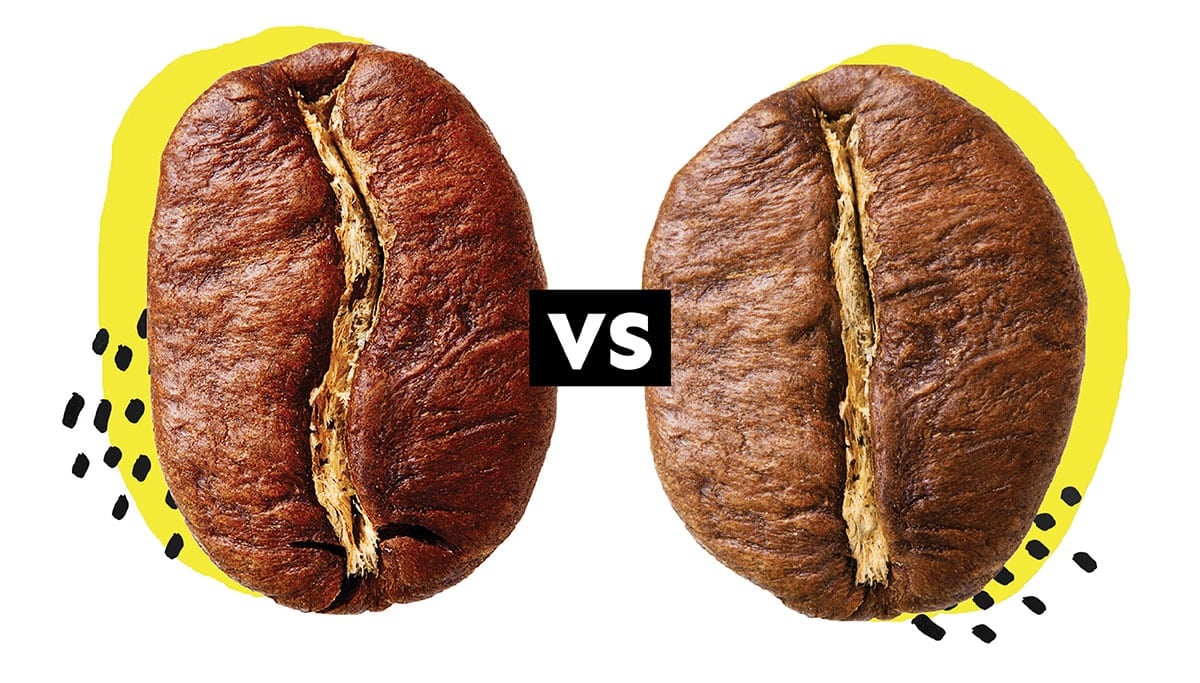
How is decaf coffee made?
The first thing to understand is that decaffeinated beans do not exist, as all beans contain caffeine. The beans are decaffeinated prior to roasting by forcing them to swell with water then removing the caffeine with an organic solvent or activated carbon. The beans are then dried and roasted. The thing to keep in mind is that decaffeinated beans still contain some caffeine, though only a fraction of that in caffeinated beans.
Espresso Beans vs Coffee Beans
Before we get into types of coffee beans, let’s touch on one more important topic – the difference between espresso and coffee beans. The real between espresso and coffee beans is the preparation of the beans. Espresso beans are roasted longer than coffee beans and at higher temperatures to extract oils from the beans to get a richer, more concentrated flavor. Espresso beans are also ground much more finely, and of course brewed under pressure.
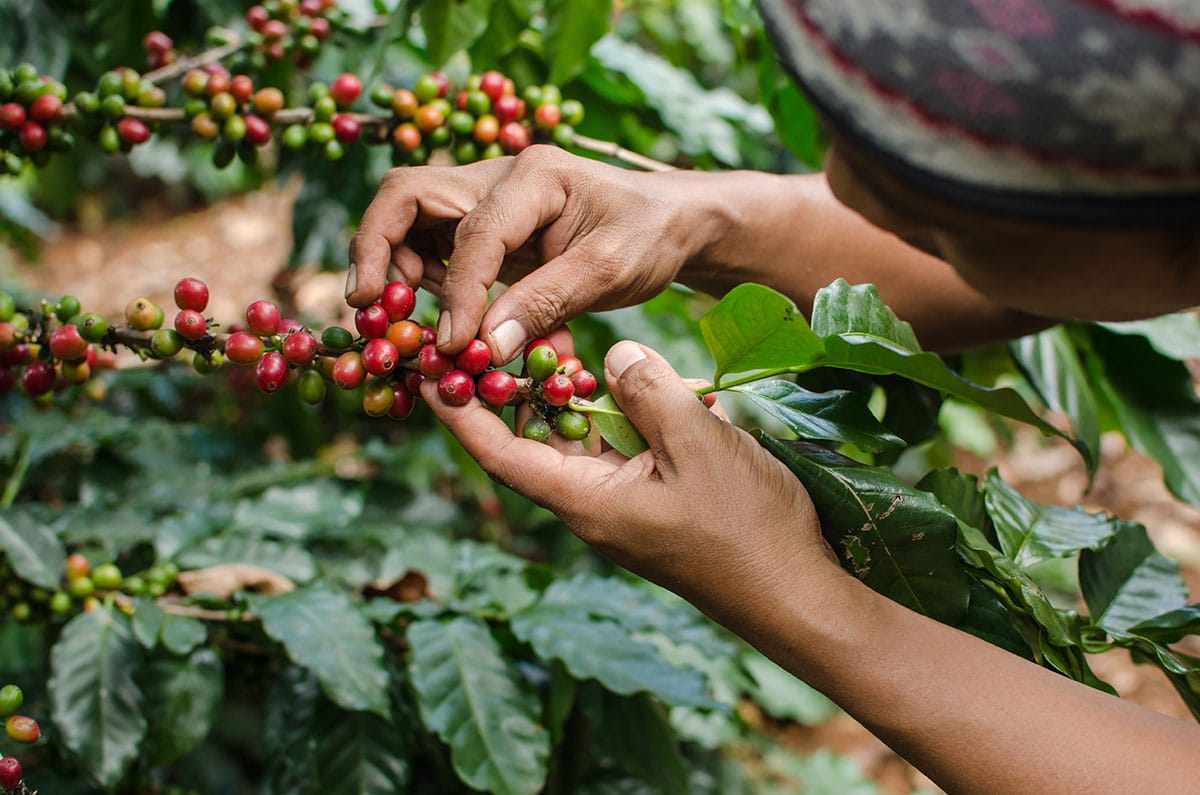
Types of Coffee Beans
There are about 120 distinct coffee bean types, but two make up the vast majority of all worldwide production and are the “parents” of most other types. Arabica beans and their sub-varieties make up almost 60% of all coffee beans in the world, while Robusta beans make up 40% of all worldwide bean exports. The other varieties are regulated to niche status. While these two coffee bean varieties dominate the market, there can be significant variation in taste within these varieties based on the climate, elevation, soil type, and region of the plants.
- Arabica Coffee Beans
- Robusta Coffee Beans
- Bourbon Coffee Beans
- Catimor Coffee Beans
- Caturra Coffee Beans
- Geisha Coffee Beans
- Harar (Harrar) Artisan Coffee Beans
- Icatu Coffee Beans
- Jackson Coffee Beans
- Jamaican Blue Mountain
- Java Coffee Beans
- Jember Coffee Beans
- Kent Coffee Beans
- Kona Coffee Beans
- Liberica Coffee Beans
- Maragatura Coffee Beans
- Maragogype Coffee Beans
- Mocha Coffee Beans
- Mundo Novo Coffee Beans
- Pacamara Coffee Beans
- Pacas Coffee Beans
- Ruiru Coffee Beans
- Sagada Coffee Beans
- SL-28 Coffee Beans
- SL-34 Coffee Beans
- Sumatra Coffee Beans
- Tanzania Peaberry Coffee Beans
- Timor Coffee Beans
- Typica Coffee Beans
Most Popular Types of Coffee Beans
The two most popular types of coffee beans in the world today are Arabica and Robusta.

Arabica Coffee Beans
Arabica coffee beans are the most popular beans in the world, and there is evidence of Arabica plant growth over 3,000 years ago.
Arabica beans are larger, sweeter, and more expensive than their prime competition, the Robusta. The added expense is because Arabica beans are harder to grow, needing more water, shade, and higher altitudes than the Robusta.
Brazil is the leading producer of Arabica beans which typically grow at elevations between 500 and 2500 meters. They are not, however native to Brazil. Arabica beans are thought to have originated in Ethiopia. Their name comes from their use on the Arabian Peninsula, present day Saudi Arabia and Yemen, in the 7th Century.
Today Arabica plants are grown in over 50 equatorial nations (nations between the Tropics of Cancer and Capricorn), and the taste and aroma of the beans varies substantially between nations and regions.
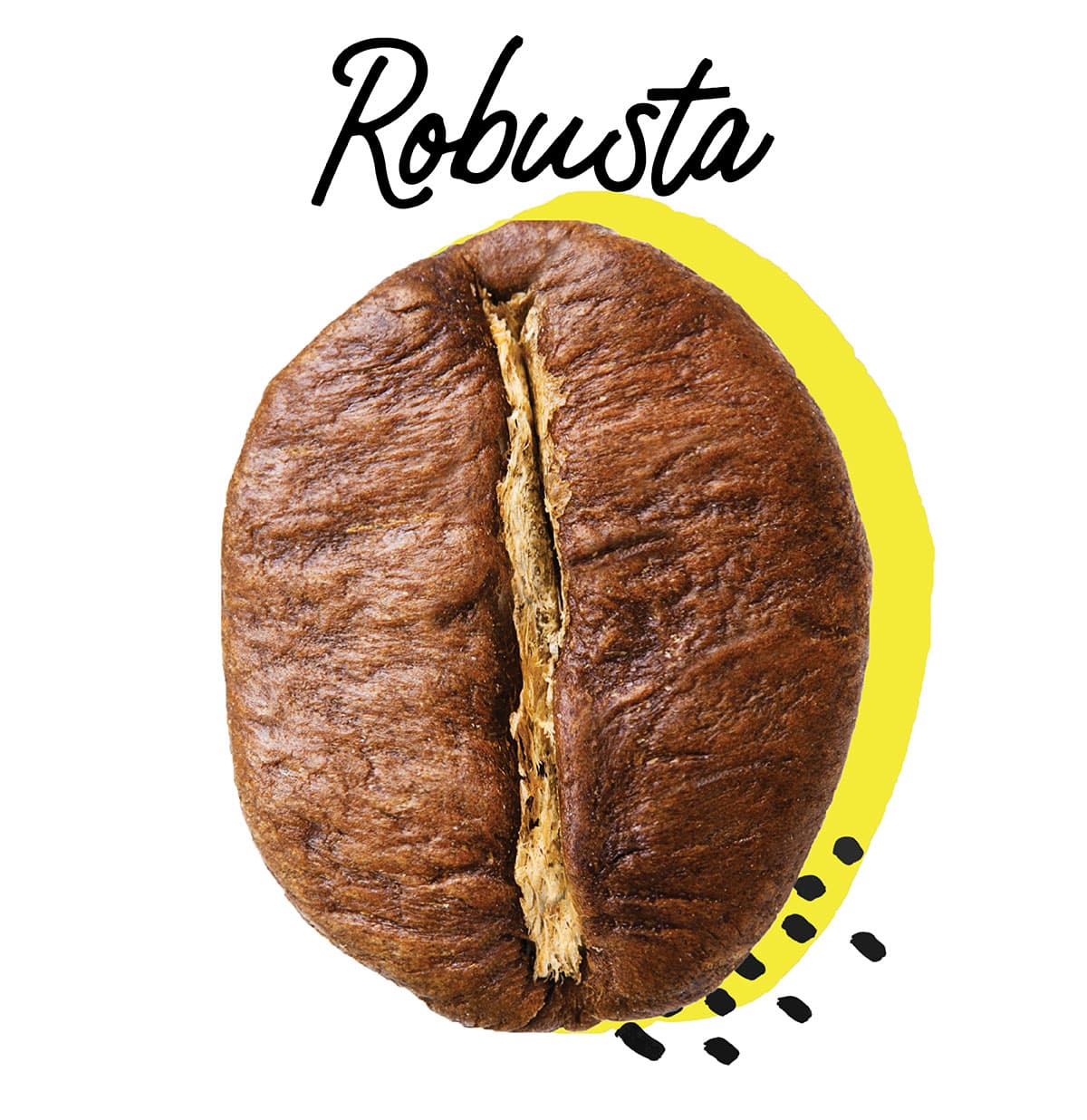
Robusta Coffee Beans
Robusta beans make up almost 40% of worldwide exports, and are grown in many of the same areas as Arabica beans to include much of Africa, Indonesia, and Vietnam. Their origin of Robusta beans is African.
Robusta beans have a lower acidity than Arabica making them less sweet and the type most often used in espresso and in instant coffee. Robusta beans have almost double the caffeine content of Arabica beans and are known for a stronger and more bitter taste and smell.
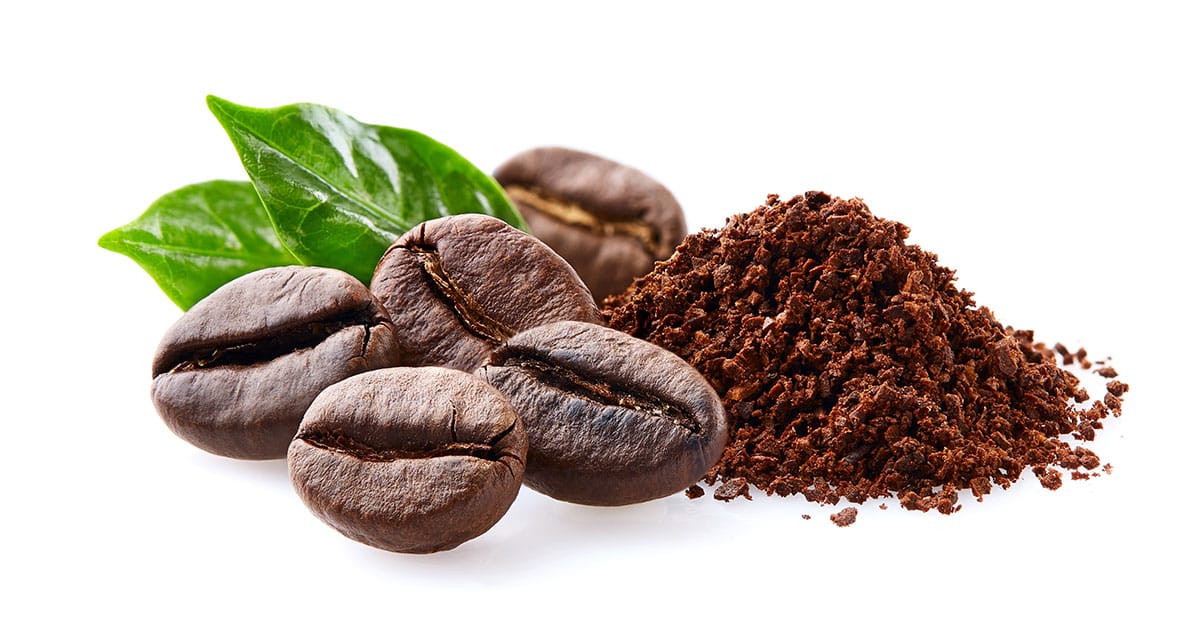
Sub-Varieties and Hybrids
While there may only be two main varieties of coffee beans, there are many variations of these beans that are used to make your favorite morning brew!
Bourbon Coffee Beans
Bourbon beans were produced by a natural mutation of Typica beans found on the Island of Bourbon. The beans were discovered by the French and spread across Africa and South America where the French had colonies. Bourbon beans are known for their sweet taste with a hint of caramel. You can find bourbon beans on Amazon and at some specialty shops. Just be careful not to confuse them with bourbon barrel beans that have become available lately.
Catimor Coffee Beans
Catimor beans are a hybrid between Caturra & Timor beans which is where their unique name comes from. They were developed in Portugal in 1959 in an attempt to produce a disease-resistant coffee plant. The plants grow quickly with large yields encouraging cultivation, but are also known for being somewhat sour and astringent, limiting their sales.
Caturra Coffee Beans
Caturra beans are a variety of Arabica beans that developed naturally from Bourbon Red beans in Brazil about 100 years ago. Today they are grown in many nations in Central and South America. Caturra plants are a high yielding variety that grows on shorter plants making them easier to harvest. This combination makes them popular with growers, and the quality coffee they produce makes them popular with roasters. You can get these in some international markets or you can find Caturra Coffee Beans online at reasonable prices.
Geisha Coffee Beans
You may also find these beans spelled Gesha when you search for them. They originated in Gesha Ethiopia in the 1950s, and had a renaissance in the first years of the 21st Century. Today they are grown in Panama, Columbia, Costa Rica, and Peru and are some of the most expensive coffee beans you can buy. You can assume they make a great cup of coffee, but their expense is also due to the specific conditions required to grow the best beans coupled with the worldwide demand and willingness to pay for the highest quality coffee. You can find Geisha Coffee Beans in international markets and online.
Harar (Harrar) Artisan Coffee Beans
Harar beans are an Arabica variety grown in the Harar region of Ethiopia. They are said to have a fruity flavor that somewhat resembles a dry red wine. Like many other specialty niche coffees you can find Harrar Artisan Arabica Coffee Beans online where they generally are only moderately expensive.
Icatu Coffee Beans
Icatu beans are a hybrid of a variety of Brazilian beans stemming from both Arabica and Robusta. Icatu beans can be found in red and yellow varieties with different lineages and different flavors that are still evolving as planters and researchers work to perfect this fairly new coffee variety. Icatu plants are very resistant to the leaf rust disease that can dramatically affect coffee crops, so combining its durability, high yields, and recognized quality coffee brews expect to see this variety increase in popularity.
Jackson Coffee Beans
Mr. Jackson, a coffee planter in India, gave his name to these beans in the early 1900s after he discovered a “new” plant growing on his farm. The natural mutation was found to be resistant to the coffee leaf rust disease that still plagues coffee planters. The plants caught the attention of Kenya’s research center who developed the variety further. Today the beans are grown primarily in Rwanda.
Jamaican Blue Mountain
Jamaican Blue Mountain beans are a variety of Arabica beans grown in the Blue Mountains of Jamaica. They came from Typica beans brought to Jamaica in 1728 when Jamaica was a British colony. The beans are known to produce a mild flavor coffee that has made them popular worldwide. Japan imports about 80% of these beans though we can still get Jamaican Blue Mountain Coffee Beans just expect to pay a bit more than your run of the mill beans.
Java Coffee Beans
Okay, admit it. You thought “java” was just the nickname for coffee. I did too until I looked more closely at a bag of Java beans a few years ago, and realized it was the type of beans giving the name to the package. They grow on the Island of Java in Indonesia. The slang term for coffee came because they were once very widely exported. Java isn’t really a cultivar of coffee but a regional style, but as we have said regional differences in climate, soil, and altitude make a big difference in coffee taste. Java is known as a strong mildly sweet coffee.
Jember Coffee Beans
Jember beans are grown and popular in Ethiopia. They are cultivated by the Jember Coffee Company known for its charity and sustainable practices. The beans are said to be sweet with a caramel, brown sugar, or maple flavor. While popular in Ethiopia, they are native to Indonesia. Unfortunately these beans aren’t easy to find.
Kent Coffee Beans
Kent beans are yet another variety of Typica and thus a subvariety of Arabica. They are native to India where they were discovered in the early 20th Century as a natural mutation of Typica. Interestingly (I guess that depends on the depth of your interest in coffee) this lineage has recently been challenged believing that this plant was bred in Kenya around 1911 as it is grown in much of Eastern Africa. The plants grow best at elevations over 1,800 meters and make a brew described as velvety.
Kona Coffee Beans
Kona Beans are grown on Hawaii’s Big Island on the slopes of Hualalai and Mauna Loa in the Kona District. Coffee beans have been grown on Hawaii since 1825 when they were introduced to Oahu by the island’s governor Chief Boki. You can buy Kona coffee everywhere on the Hawaiian Islands where tourists are found. Just be careful to read the label as some are sold as 100% Kona coffee and some as 10% Kona coffee and the seller will not highlight the difference if he is selling the 10% packages. If you aren’t going to Hawaii, you can often find the beans at select groceries or get your Kona Coffee Beans online.
Liberica Coffee Beans
Liberica beans are native to Western Africa and primarily Liberia for which the beans are named. These beans are unusual in that they are tolerant of heat and grow well at low altitudes. Today Liberica beans are grown mostly in Malaysia, Indonesia, and the Philippines. While they only tally 2% of world production, they represent 95% of the beans grown in Malaysia. The taste of these beans is known to be rather inconsistent which limits worldwide popularity.
Maragatura Coffee Beans
Maragatura beans are a hybrid of Maragogype and Caturra beans that was developed to give the beans the flavor of Maragoygype beans and the high yield of Caturra beans. They grow primarily in Brazil, El Salvado, and Nicaragua in regions over 1,400 meters elevation. They are a high yielding plant, but the beans require a lot of maintenance. If you can find the beans, they are said to produce a fine cup of Joe.
Maragogype Coffee Beans
Maragogype, also spelled Maragogipe, was found growing as a natural mutation of Typica plants in the Brazilian city of Maragogipe regions of Brazil around 1870. It is also known as the “elephant coffee bean” as it grows larger than most other varieties. The taste of this coffee varies widely depending on where it is grown in Brazil and the quality of soil on each farm or plantation. The finer selections are highly regarded for their high quality brews. Nicaraguan Maragogype (Elefante) Coffee Beans can be found online at a reasonable price and are certainly worth trying.
Mocha Coffee Beans
Mocha beans are a variety of Arabica beans from Mocha Yemen. Okay, I know you didn’t expect that, but the name did come from a geographic location, not the addition of chocolate. These small, oddly shaped, yellow beans do, however, have a mildly chocolaty taste, and were for centuries combined with Java beans brought by traders on the Silk Road. This combination appears to be largely lost to posterity and the innumerable variations in coffee beans and coffee drinks. Mocha Coffee Beans are also grown in Hawaii today and can be purchased online.
Mundo Novo Coffee Beans
Mundo Novo beans are a hybrid between Bourbon and Typica varieties created by Brazil’s Instituto Agronômico de Campinas (IAC) in the 1940s. New variants of the bean were developed after 1943 and the variety spread across Brazil and to other parts of Central America and to a lesser extent South America. The plants are highly productive, but also disease prone which keeps them from a higher level of cultivation. Novo Coffee Beans can be found online, and are noted for their nutty flavor profile.
Pacamara Coffee Beans
Pacamara high altitude beans are a hybrid between Pacas (a Bourbon mutation) and Maragogype (a Typica mutation). This coffee bean type demonstrates how in the wide world of coffee all beans really trace their origin back to Arabica and Robusta plants through a variety of mutations and hybridizations. Pacamara was created by the Salvadoran Institute for Coffee Research in 1958. The intent was to leverage the recognized high quality coffee from Maragogype and the higher yields of Pacas. The institute tinkered with this plant for about 30 years before releasing the variety for commercial production. Pacamara Coffee Beans are available at a moderate price if you want to test how they did on the quality for yourself.
Pacas Coffee Beans
Pacas beans came from a naturally occurring Bourbon mutation that was found growing in El Salvador in 1949. This variety has not taken off in popularity or production as it is more prone to disease damage than some other varieties and produces a coffee generally rated good but not great.
Ruiru Coffee Beans
Ruiru 11 was developed by the Kenyan Coffee Research Station in 1985. Unfortunately coffee experts assert that it produces lower quality coffee than other varieties developed at the Research Station like SL28 & SL 34.
Sagada Coffee Beans
Sagada beans are a variety of Typica beans that have grown in the highlands of the Philippines’ Sagada district since around 1900. Despite its age, Sagada beans have only recently been planted broadly in the Philippines with the help of government initiatives. They remain, however, difficult to find abroad.
SL-28 Coffee Beans
SL-28 wins the prize for least imaginative name! The SL stands for Scott Agricultural Laboratories in Kenya that developed this variety from Tanzania’s Tanganykia beans around 1930. The beans were designed to be disease resistant with a sweet taste and strong aroma. You can find these online from specialty coffee sellers.
SL-34 Coffee Beans
SL-34 beans are another developmental variety from the Scott Agricultural Laboratories that developed this typica style plant in the 1920s. Today the beans are Kenya’s leading coffee export. While the plants are disease prone, surprising for an engineered plant, they produce a high quality coffee known for their sweet fruity flavor.
Sumatra Coffee Beans
Sumatra is actually home to many subvarieties of beans, but we won’t attempt to list them all. You can, however, find loads of Sumatra Coffee Bean options available online. Sumatra is known for a plethora of high quality varieties, and coffee has grown on this Indonesian island since the late 1800s.
Tanzania Peaberry Coffee Beans
Tanzania Peaberry beans are a variety of Typica beans that could really be just called a brand, but their unique growing region gives the beans a special flavor. They only grow on the slopes of Mount Kilimanjaro in Tanzania. The volcanic soil contributes greatly to their unique flavor. They are also interplanted with banana trees to shade the beans which may or may not affect bean flavor. Tanzania Peaberry Coffee Beans are available online.
Timor Coffee Beans
The small island of Timor produces about 11 million pounds of their own unique beans each year, or about 0.1% of worldwide production. Despite this, their beans are an important export crop for the poor nation of 1.3 million people. The beans are a cross between Arabica and Robusta beans, and are grown on small farms in East Timor where the hand picked beans are known for their sweetness and mild acidity.
Typica Coffee Beans
Typica beans are probably the most grown variety of Arabica beans as there are numerous sub-varieties of Typica such as Mundo Novo and Jamaica Blue Mountain. Typica beans are native to Yemen but were spread around the world by early traders and explorers. They expanded out to India through traders on the Silk Road and to the Philippines carried by Spanish explorers. As the plants were grown in different regions, the varying climates, elevations, moisture, and soils produced the abundance of Typica varieties we have today.
World’s Top Ten Coffee Bean Producers
Brazil is the top producer growing about 33% of the world’s beans. 70% of these are Arabica beans.
Vietnam is second growing over 4 billion pounds of beans a year, the majority of which are Robusta beans used in instant coffee production.
Columbia is the third largest producer aided by his abundance of high elevation land under cultivation. Many coffee enthusiasts consider Columbia to be the producer of the finest coffee beans.
Indonesia comes in at #4, and among the nation’s thousands of islands the beans from the Island of Sumatra are often considered the best.
Ethiopia is the world’s fifth leading producer as well as the origin of Arabica beans. Coffee is an extremely important export crop for this extremely poor nation.
Honduras is 6th with 90% of their production being Arabica beans. Honduras’ varying microclimates result in many variations in the Arabica beans they grow.
India is the 7th on our list producing only 3% of the world’s coffee, the majority of which is Robusto exported to Eruope.
Number 8 brings us back to Africa as Uganda may be the origin of Robusta beans. Uganda is almost as poor as Ethiopia, so coffee is a very important part of their economy providing almost 2% of their GDP.
Peru is the world’s 9th largest bean producer. It has a diverse climate which leads to a wide variety of bean flavors.
Guatemala closes out our list at Number 10 as coffee beans make up 40% of that nation’s agricultural exports most of which are Arabica beans.
Trivia Answer
The Answer is D. A 12 oz can of coke has 34 mg of caffeine while the Starbucks medium roast has 280 mg.
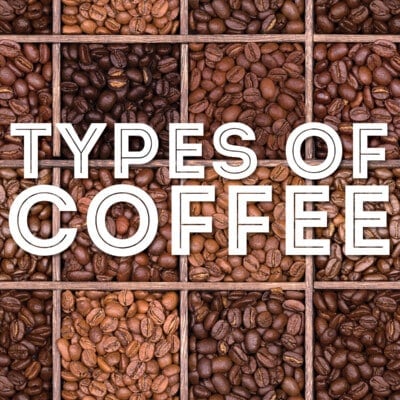
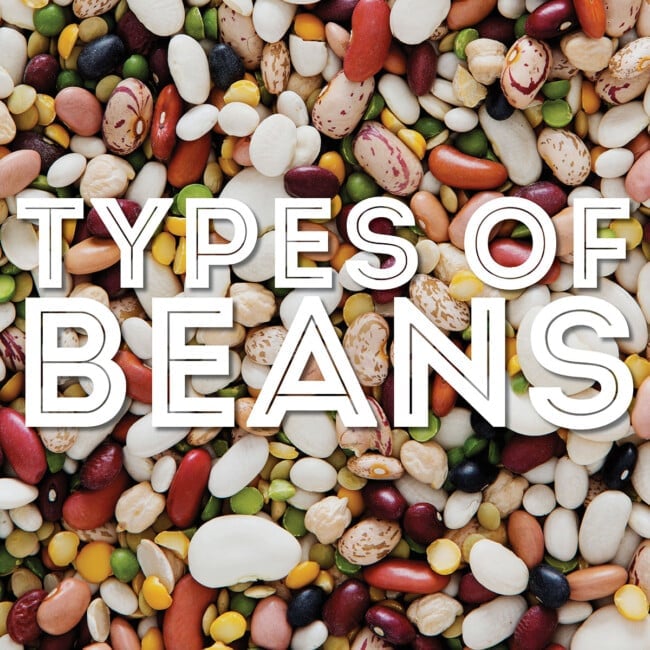
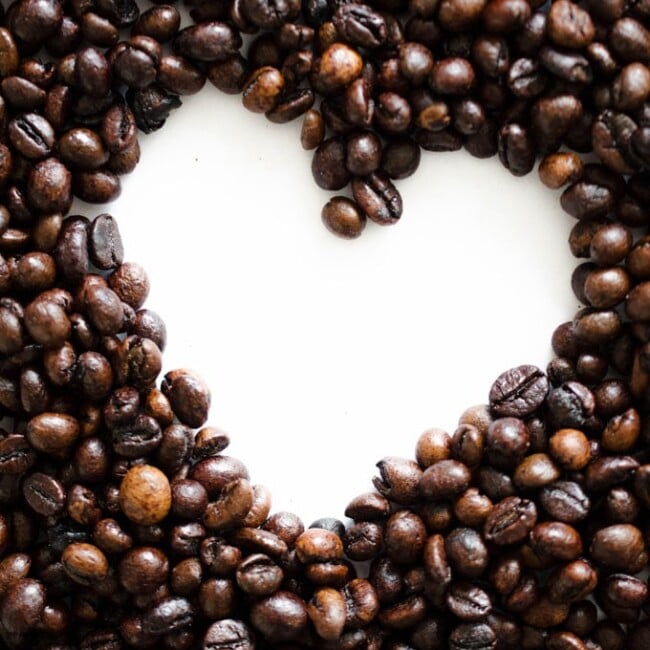
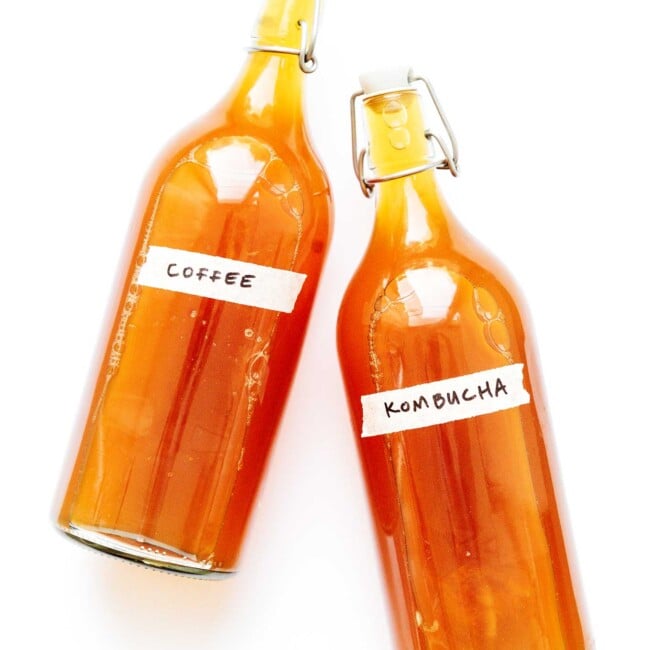
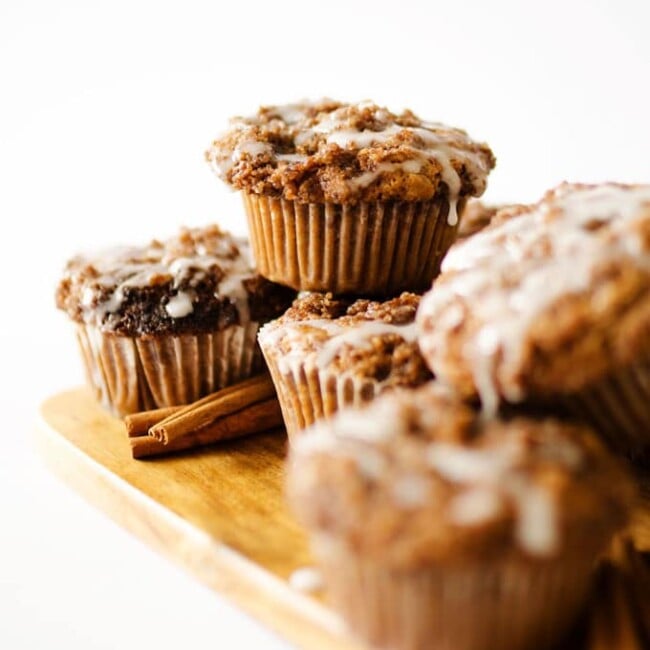
RON says
Odd in this article you constantly called places in Africa the poorest nations, but some countries in South America are worse.
George says
As part of the writing team, I have to admit that is a fair point. Hope you found something you can use in this article and perhaps a coffee you want to try, and if it supports the world’s poorest people wherever they may be growing beans, all the better.
dik says
Incredible article. I’m not a coffee connaisseur; I just drink lots of it. I’ve settled into a Columbia blend, not knowing it is one of the best. I jst preferred it. I didn’t know it was a form of the Arabica beans. I just found out.
shrenik says
thanks a lot Sarah , love it
Paul says
Thank you for this information. I grew up in the US drinking primarily Arabica, but searched for different beans and tried Java, Jamaica Blue Mountain, Kona, Mocha and Sumatra. Knowing so many other beans exist gives me a new goal. I now live in Viet Nam and regularly get to enjoy Robusta. Coffee is quite a common drink here, with a coffee shop found on nearly every block.
If you truly enjoy the drink, I encourage you to make a trip here and sample their variety and the special way they like to serve it.
KenC says
I have probably drunk enough coffee (bean-to-cup) equivalent to a small countries output. It is an endless pursuit seeking the best coffee that is a balance between taste/price. However, a relatively enjoyable one. I can’t match the same quality that the barsitas put together on their big expensive machines but I can do a pretty acceptable flat white or latte. Anyway, getting to the point, I have found Monsoon Malabar to be the best so far that comes close to hitting the target. However, it doesn’t mean the search is over. There are still millions of beans just waiting for the coffee monster. In fact, it’s put me in the mood for cuppa all that talk of coffee.
Wayne Howell says
Thanks for this great article on coffee beans. I learned allot about coffee beans and will try some new beans in the future. Please add me to future articles.